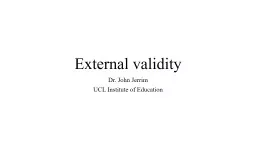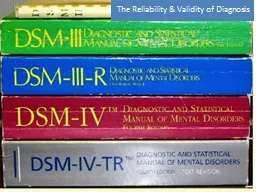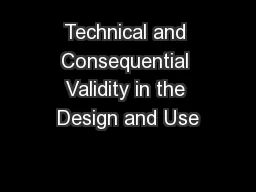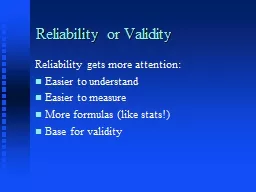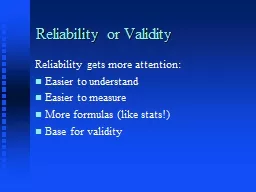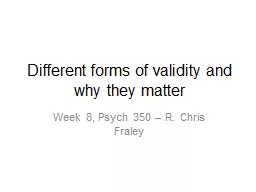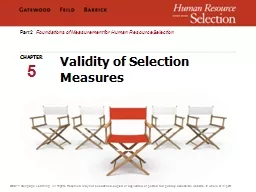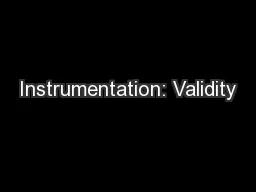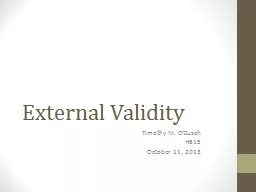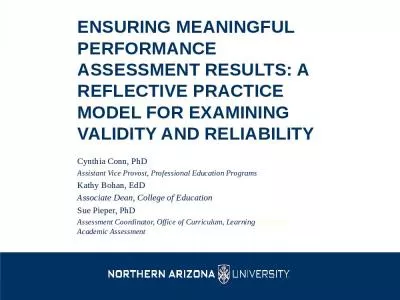PPT-External validity Dr. John Jerrim
Author : alyssa | Published Date : 2021-01-28
UCL Institute of Education Aims To understand what external validity is and why it is important The difference between sample and population average treatment effects
Presentation Embed Code
Download Presentation
Download Presentation The PPT/PDF document "External validity Dr. John Jerrim" is the property of its rightful owner. Permission is granted to download and print the materials on this website for personal, non-commercial use only, and to display it on your personal computer provided you do not modify the materials and that you retain all copyright notices contained in the materials. By downloading content from our website, you accept the terms of this agreement.
External validity Dr. John Jerrim: Transcript
Download Rules Of Document
"External validity Dr. John Jerrim"The content belongs to its owner. You may download and print it for personal use, without modification, and keep all copyright notices. By downloading, you agree to these terms.
Related Documents

